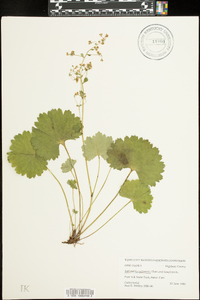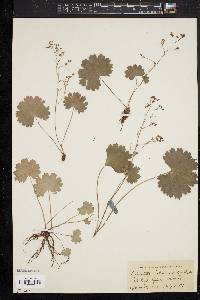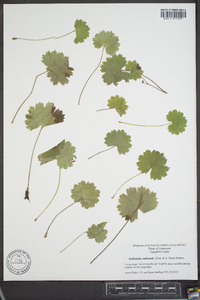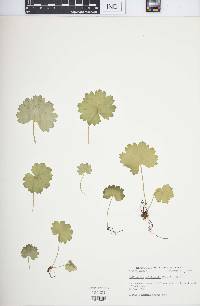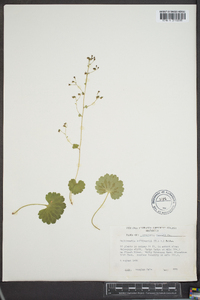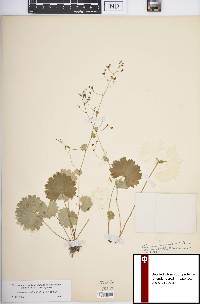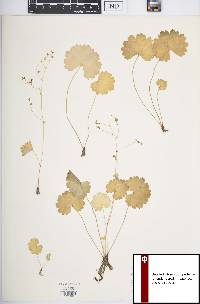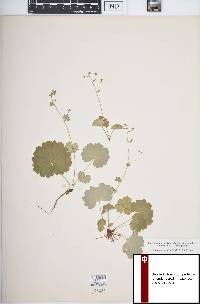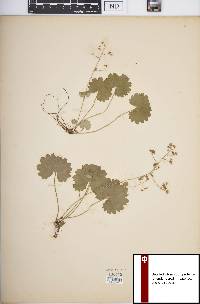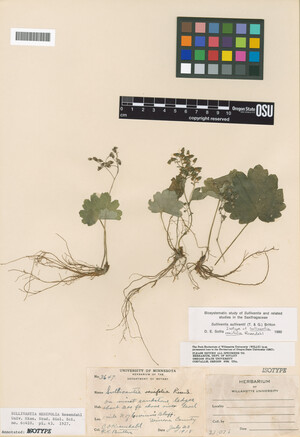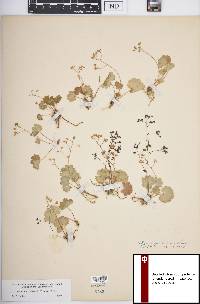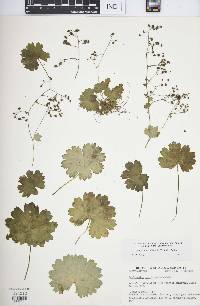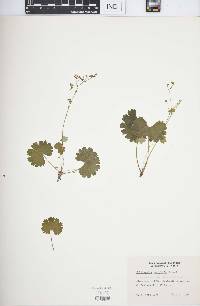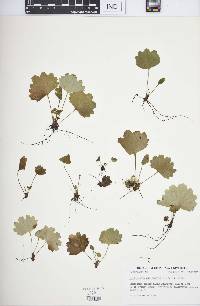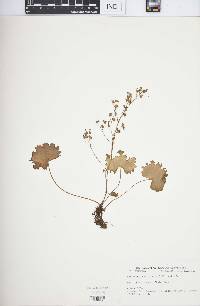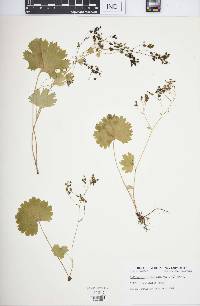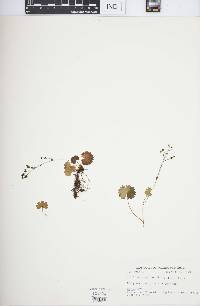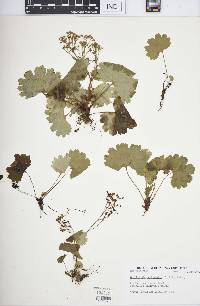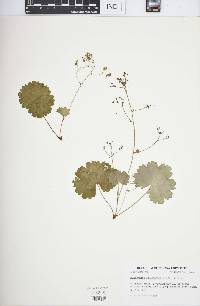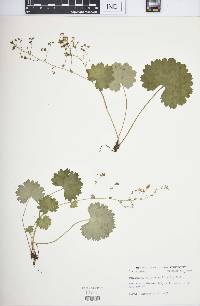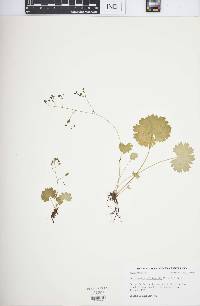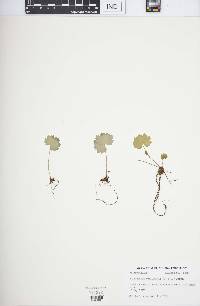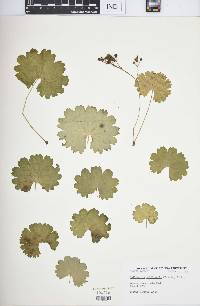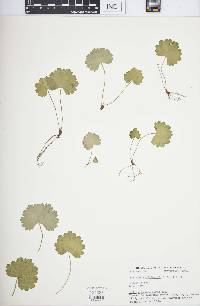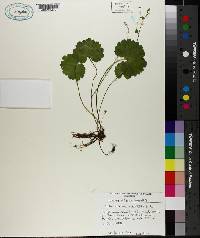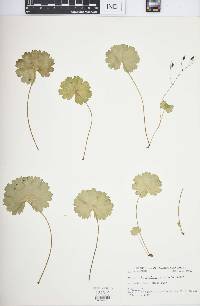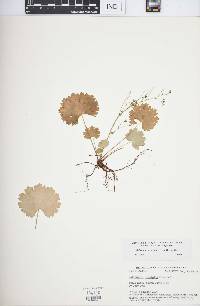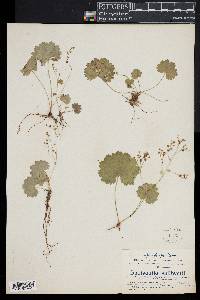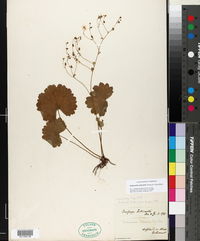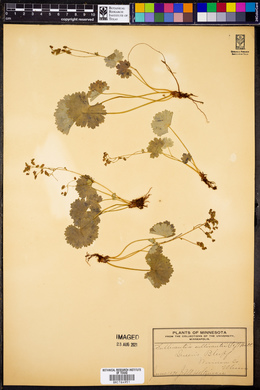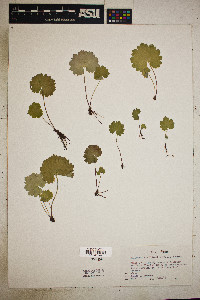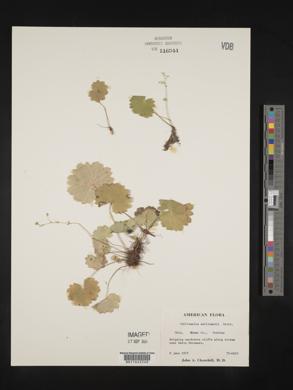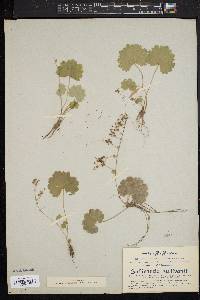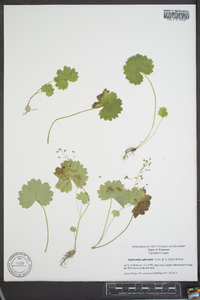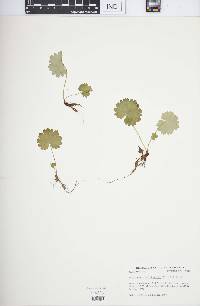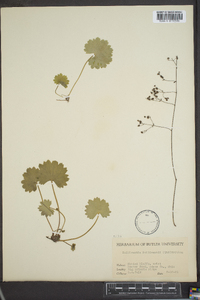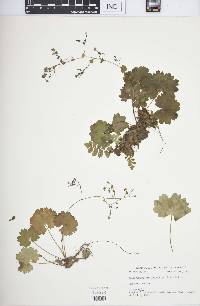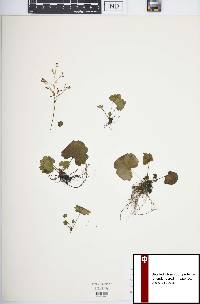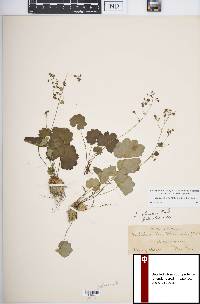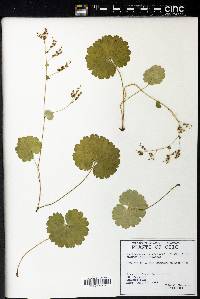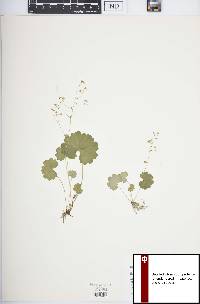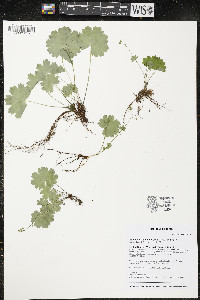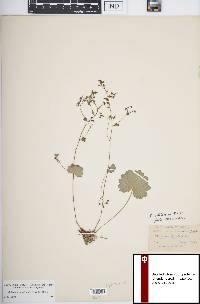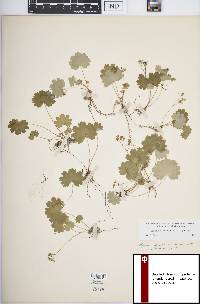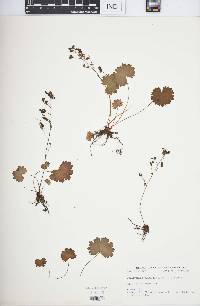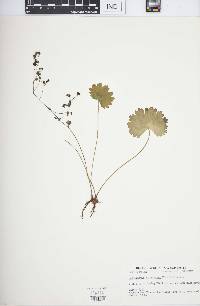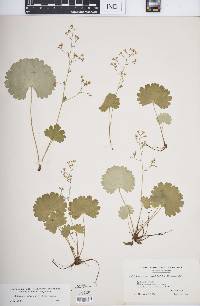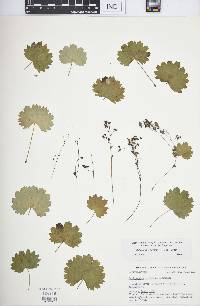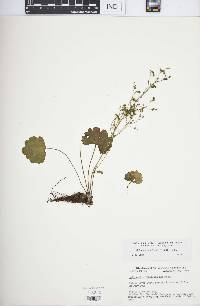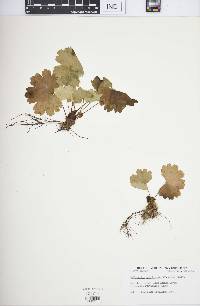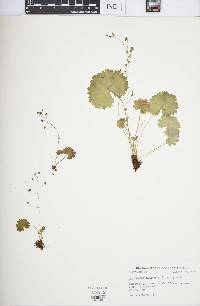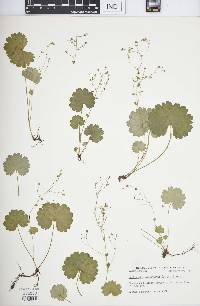Sullivantia sullivantii
|
|
|
|
Family: Saxifragaceae
Sullivant's Coolwort
|
Plants not stoloniferous. Flowering stems 5-40 cm, erect to ascending. Leaves: blade 1-12 cm wide, 1-2 times toothed, 7-13-lobed for 1/4-1/2 length to shallowly and somewhat irregularly 7-25-lobed; lobes cuneate-oblong to crenate and 1-2 times denticulate to coarsely subcrenulate, margins erose with long bristles to lacinate. Inflorescences erect to decumbent, primary and higher-order branches ascending relative to central axis. Flowers: hypanthium tubular-campanulate, portion distal to adnation to ovary not marked by conspicuous flaring, 1.3-3.2 × 1.2-2.1 mm, stipitate-glandular proximally; sepals triangular-ovate to lanceolate-oblong, not as broad as long at apex, 0.8-1.5 × 0.6-1.1 mm, apex acute; petals unlobed, 1.7-3.5 mm, ovate and abruptly narrowed in claw to lanceolate and gradually narrowed into claw, 0.7-1.6 mm wide; ovary ca. 1/2 inferior. Capsules cylindric-ovate to cylindric-elliptic, 3-7.5 × 1.3-3.2 mm, beaks ± spreading. Seeds usually tan, rarely red-brown, 0.7-1.2 × 0.2-0.5 mm, main body (excluding winged margins) 0.4-0.7 mm. 2n = 14. Flowering May-Jul. Moist limestone and sandstone cliffs; 300-700 m; Ill., Ind., Iowa, Ky., Minn., Mo., Ohio, Tenn., Va., Wis. Perennial herb 10 - 40 cm tall Leaves: basal, long-stalked, 3 - 7 cm wide, nearly round to kidney-shaped with many shallow lobes, each lobe ending in two or three short teeth, slightly hairy or nearly hairless. Inflorescence: loose and open with ascending branches (panicle), 5 - 25 cm long, glandular. Flowers: white, with sepals fused into a five-lobed bell-shape, spoon- to lance-shaped petals (3 mm long) withering but persisting, five stamens shorter than the petals, and a two-chambered ovary. Fruit: a two-beaked capsule, narrow egg-shaped, opening between the beaks, containing many narrowly winged seeds. Flowering stem: slender, flexible or decumbent, with zero to two leaves. Similar species: Tiarella cordifolia, Mitella diphylla, and Mitella nuda all have unwinged seeds, unbranched inflorescences (racemes), and flowers with ten stamens and a single-chambered ovary. Heuchera americana and Heuchera richardsonii have flowering stems that lack leaves, flowers that have a single-chambered ovary, and seeds that lack wings. Flowering: June to July Habitat and ecology: This species grows along moist shaded cliffs and is rare in the Chicago Region. It is more commonly seen in the driftless area of northwestern Illinois. Occurence in the Chicago region: native Etymology: Sullivantia and Sullivantii are named after William Starling Sullivant (1803 - 1873), the bryologist that discovered the original species of the genus. Author: The Morton Arboretum Lvs round-reniform, 3-7 cm wide, sparsely pubescent to subglabrous, with numerous shallow lobes each terminating in 2 or 3 short teeth; infl lax, 2-4 dm, with ascending branches, conspicuously glandular; pet 3 mm; 2n=14. Moist shaded cliffs; s. O. and e. Ky. to Mo., nw. Ill., sw. Wis., ne. Io., and se. Minn., in unglaciated areas. June, July. (S. renifolia, the more western plants) Gleason, Henry A. & Cronquist, Arthur J. 1991. Manual of vascular plants of northeastern United States and adjacent Canada. lxxv + 910 pp. ©The New York Botanical Garden. All rights reserved. Used by permission. From Flora of Indiana (1940) by Charles C. Deam This species is very local throughout its range and in Indiana it is found only in Clark, Jefferson, and Jennings Counties. It grows in the shade in the wet crevices of perpendicular, shaly cliffs in Clifty Falls State Park in Jefferson County, along Fourteen-mile Creek near its mouth in Clark County, and along the north fork of the Muscatatuck River about three fourths of a mile northeast of Vernon. It has been reported also from Carroll, Cass, and Floyd Counties. …… Indiana Coefficient of Conservatism: C = 10 Wetland Indicator Status: N/A |


